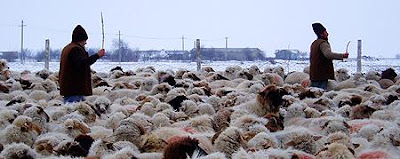Romanian Carpathians belong to the Alpino-Carpathian-Himalayan Mountain Chain System, including intercontinental area of EuroAsia. Carpathians begins north of Bratislava and go to the river Timok, in Yugoslavia, as an extension of the Alps. Carpathians length have exceeds that of the Alps being divided into 4 groups: Western Carpathians, Forests,Eastern and Southern, extending to the territories of the Czech Republic, Slovakia, Poland, Ukraine and Romania. Romanian Carpathians surround the Transylvanian basin from the north, east, south and west, like a shielding wall, being called “spinal column” of mioritic space.
 |
| Danube | |
Making its way through the “heart” of Romania, the Carpathian Mountains have remained one of the last places that have not been adulterated yet in Europe. Along with the Danube and the Black Sea, the mountains represent the specific geographic element for the territorial uniqueness of the Romanian state.
The incredible mountain landscapes, but also the amazing beauty of a land whose time seems to be endless (the shepherds lead their sheep, the horses harnessed to the wagons run slowly and the medieval settlements keep their traditions and customs) turn the Romanian Carpathians into a spectacular open museum, having a special status in the touristic circuit of the country because of the extremely impressive landscapes, glacial valleys, limestone areas., unique and peculiar shapes of the rocks.The Eastern side of the Carpathians, called ”The Oriental Carpathians”, are remarkable for the multitude of natural passes, such as Brotocea, Prislop, Bicaz, Gutai, Oituz, passes that make the traffic possible on each side of the Carpathian chain.












